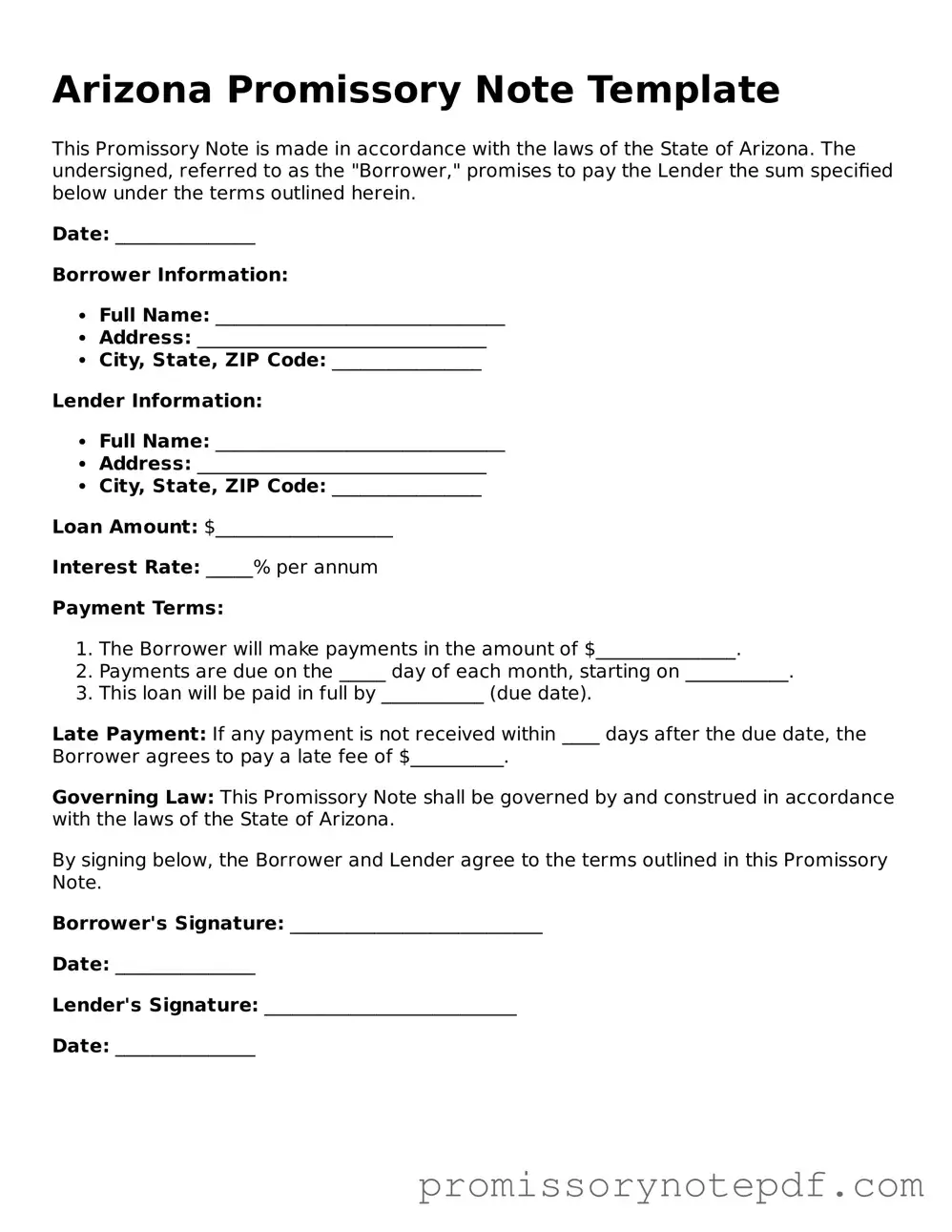The Arizona Promissory Note is similar to a Loan Agreement. Both documents outline the terms of a loan, including the amount borrowed, interest rate, and repayment schedule. While a Promissory Note is often simpler and focuses primarily on the borrower's promise to repay, a Loan Agreement typically includes more detailed terms and conditions, such as collateral requirements and default provisions. Both documents serve to protect the interests of the lender and establish the obligations of the borrower.
A Mortgage is another document that shares similarities with the Arizona Promissory Note. While the Promissory Note represents the borrower's promise to repay the loan, the Mortgage secures that promise by placing a lien on the property being financed. This means that if the borrower defaults, the lender has the right to foreclose on the property. Both documents are often executed together in real estate transactions, ensuring that the lender has a legal claim to the property as security for the loan.
A Deed of Trust is closely related to the Promissory Note as well. In this arrangement, a third party, known as a trustee, holds the title to the property until the loan is repaid. Like a Mortgage, a Deed of Trust provides security for the loan. The Promissory Note outlines the borrower's obligation to repay, while the Deed of Trust specifies the process for foreclosure if the borrower fails to meet those obligations. Both documents work together to protect the lender's interests.
An Installment Agreement also bears similarities to the Arizona Promissory Note. This document outlines a payment plan for the borrower to repay a debt over time, often in regular installments. Like a Promissory Note, it specifies the total amount owed, the interest rate, and the payment schedule. However, an Installment Agreement may cover a wider range of debts, including personal loans and installment sales, rather than being limited to a specific loan type.
A Secured Note is another document akin to the Arizona Promissory Note. This type of note is backed by collateral, which provides the lender with additional security. If the borrower defaults, the lender can claim the collateral to recover the outstanding debt. The Secured Note includes details about the collateral, similar to how a Promissory Note outlines the repayment terms. Both documents serve to formalize the borrowing relationship while providing security for the lender.
An Unsecured Note differs from the Arizona Promissory Note in that it does not involve collateral. Instead, it is based solely on the borrower's promise to repay. While both documents outline the terms of the loan, an Unsecured Note typically carries a higher risk for lenders, as they have no claim to specific assets in the event of default. However, both documents serve the purpose of establishing a legal obligation for repayment.
A Personal Loan Agreement is similar to the Arizona Promissory Note in that it details the terms of a personal loan between individuals or entities. This document typically includes the loan amount, interest rate, repayment schedule, and any fees associated with the loan. While a Promissory Note is often a standalone document, a Personal Loan Agreement may include additional clauses addressing the relationship between the parties involved, providing a more comprehensive framework for the loan.
Finally, a Credit Agreement is another document that shares similarities with the Arizona Promissory Note. This agreement outlines the terms and conditions under which credit is extended to a borrower. While a Promissory Note focuses on the borrower's promise to repay a specific loan, a Credit Agreement may cover a broader range of credit terms, including revolving credit lines. Both documents establish the obligations of the borrower and the rights of the lender, ensuring clarity in the lending relationship.
